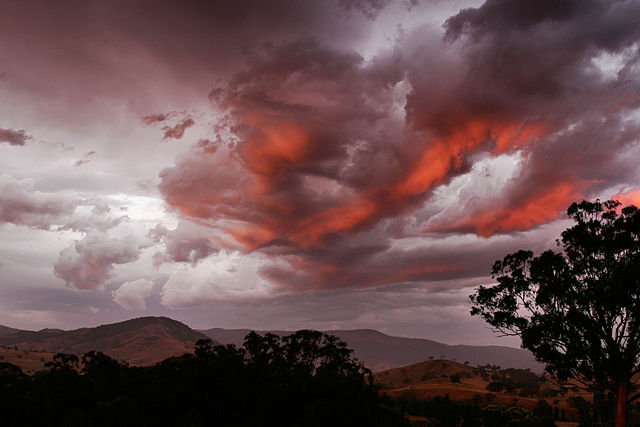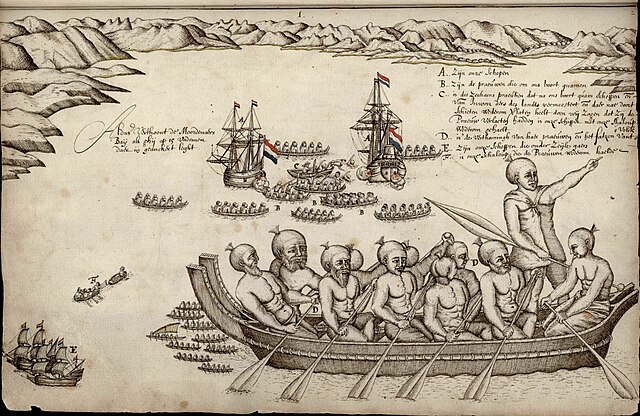In Māori mythology, Tāwhirimātea is the god of weather, including thunder and lightning, wind, clouds and storms. He is a son of Papatūānuku and Ranginui. Tawhirimatea is the second oldest of 7 children, all of whom are boys. In his anger at his brothers for separating their parents, Tāwhirimātea destroyed the forests of Tāne, drove Tangaroa and his progeny into the sea, pursued Rongo and Haumia-tiketike till they had to take refuge in the bosom of their mother Papa, and only found in Tūmatauenga a worthy opponent and eternal enemy. To fight his brothers, Tāwhirimātea gathered an army of his children, winds and clouds of different kinds - including Apū-hau, Apū-matangi, Ao-nui, Ao-roa, Ao-pōuri, Ao-pōtango, Ao-whētuma, Ao-whekere, Ao-kāhiwahiwa, Ao-kānapanapa, Ao-pākinakina, Ao-pakarea, and Ao-tākawe. Grey translates these as 'fierce squalls, whirlwinds, dense clouds, massy clouds, dark clouds, gloomy thick clouds, fiery clouds, clouds which preceded hurricanes, clouds of fiery black, clouds reflecting glowing red light, clouds wildly drifting from all quarters and wildly bursting, clouds of thunder storms, and clouds hurriedly flying on'.

The clouds are children of Tāwhirimātea
Māori mythology and Māori traditions are two major categories into which the remote oral history of New Zealand's Māori may be divided. Māori myths concern tales of supernatural events relating to the origins of what was the observable world for the pre-European Māori, often involving gods and demigods. Māori tradition concerns more folkloric legends often involving historical or semi-historical forebears. Both categories merge in whakapapa to explain the overall origin of the Māori and their connections to the world which they lived in.
Six major departmental atua represented by wooden godsticks: left to right, Tūmatauenga, Tāwhirimātea, Tāne Mahuta, Tangaroa, Rongo-mā-Tāne, and Haumia-tiketike.
Detail from a ridgepole (tāhūhū) in a Ngāti Awa wharenui. Believed to represent one of two ancestors: Tūwharetoa or Kahungunu.
First European impression of (Ngāti Tūmatakōkiri) Māori, at Murderers' Bay, 1642.




